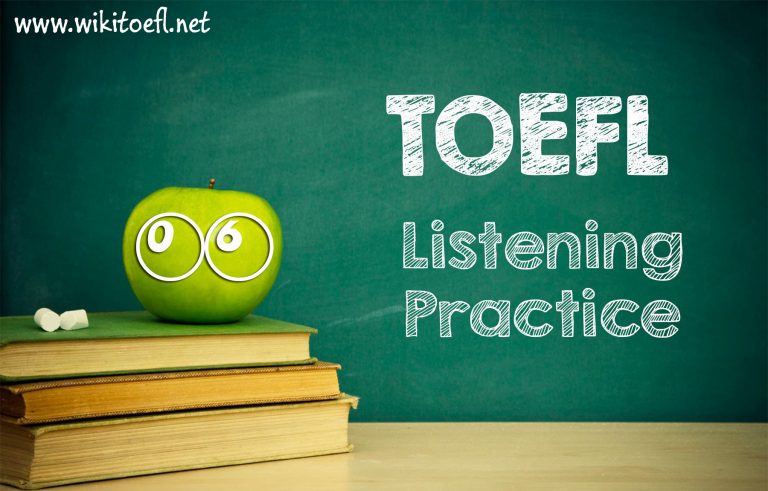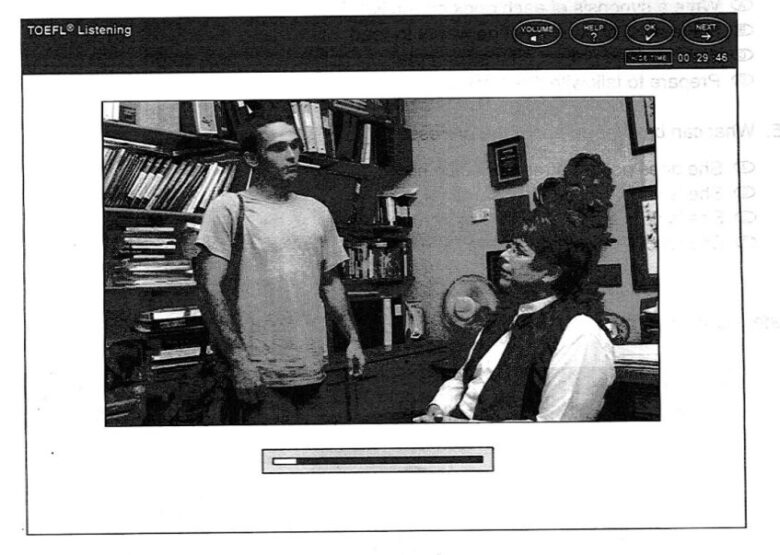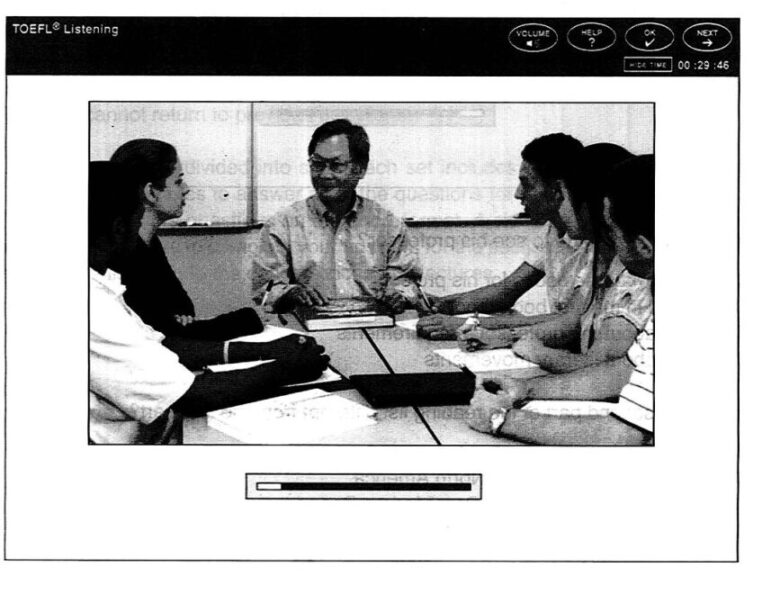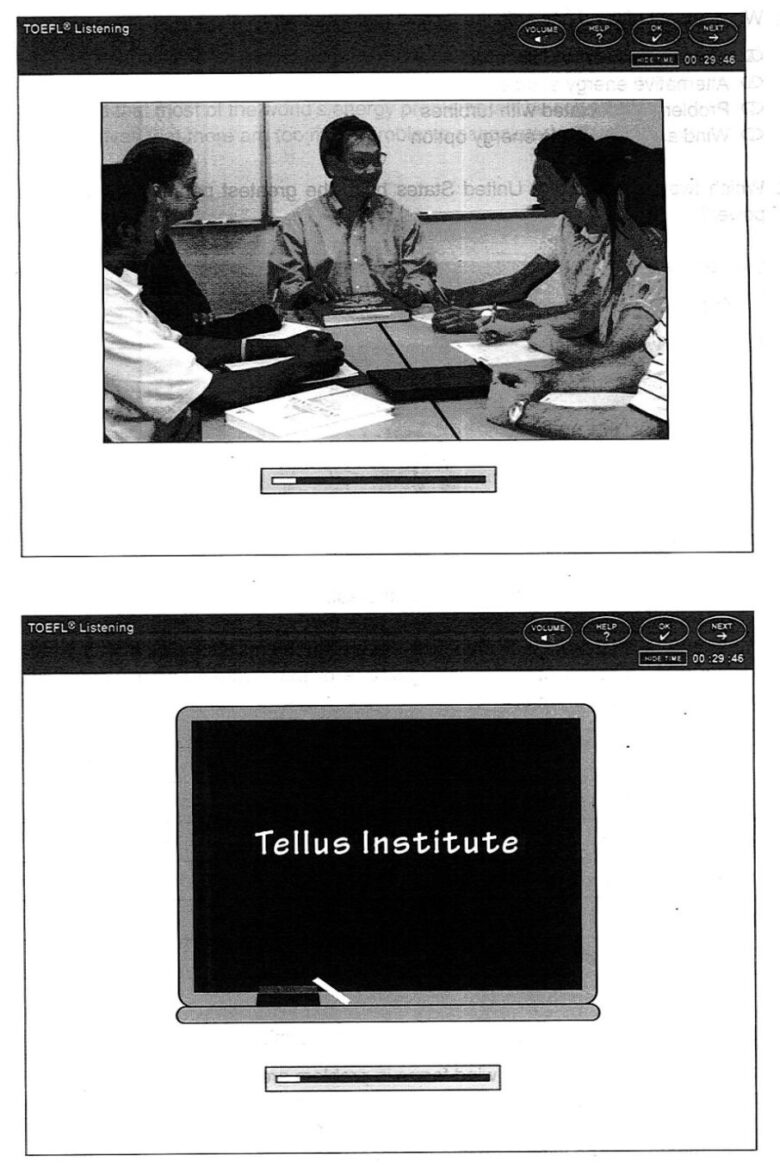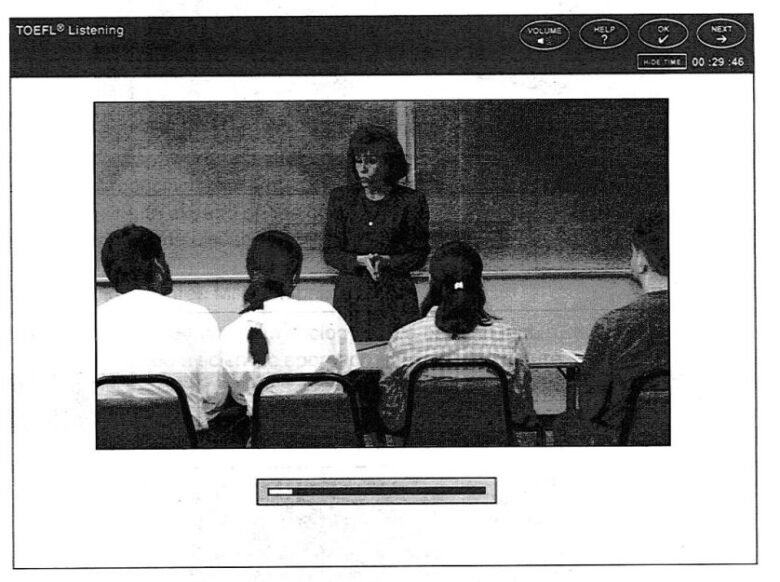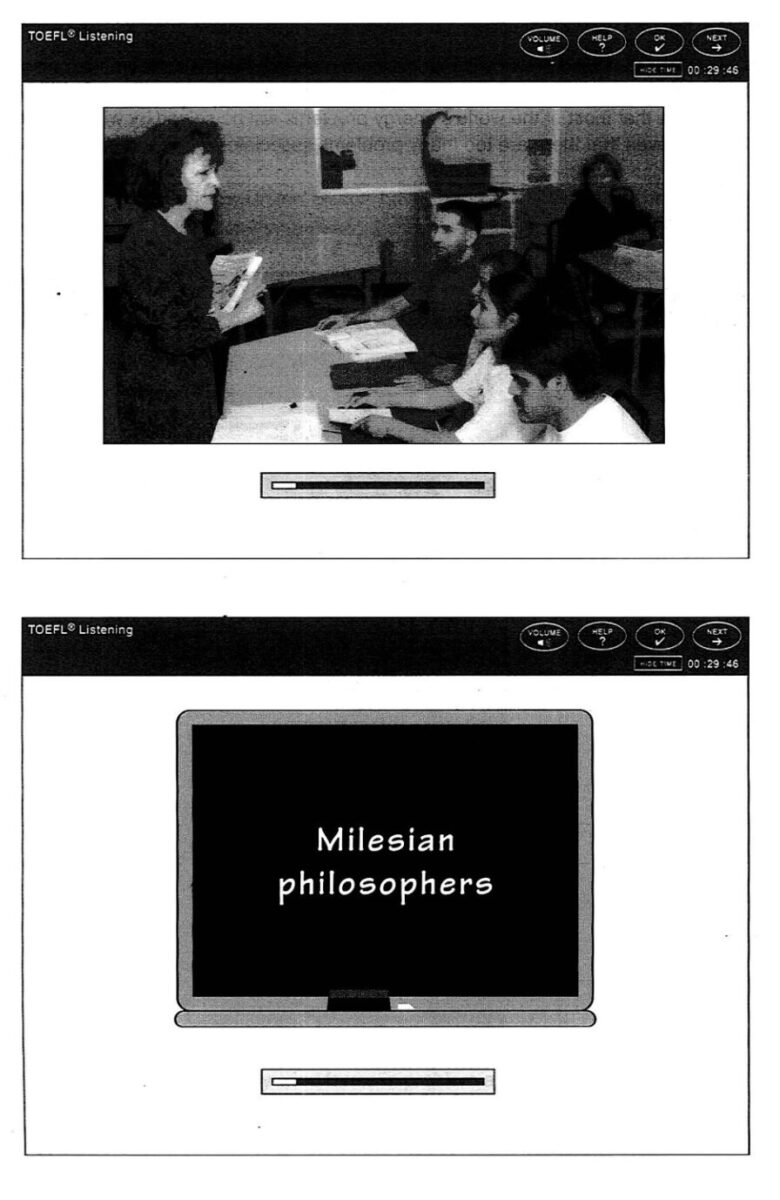TOEFL IBT Listening Practice Test 06 from Barron’s TOEFL iBT
The Listening section tests your ability to understand spoken English that is typical of interactions and academic speech on college campuses. During the test, you will listen to conversations and lectures and answer questions about them.
This is the short format for the Listening section. On the short format, you will listen to two conversations and four lectures. After each listening passage, you will answer 5-6 questions about it.
You will hear each conversation or lecture one time. You may take notes while you listen, but notes are not graded. You may use your notes to answer the questions.
Choose the best answer for multiple-choice questions. Follow the directions on the page or on the screen for computer-assisted questions. Click on Next and then on OK to go on to the next question. You cannot return to previous questions.
The Listening section is divided into sets. Each set includes one conversation and two lectures. You have 10 minutes to answer all of the questions for each set. You will have 20 minutes to answer all of the questions on the short format. A clock on the screen will show you how much time you have to complete your answers for the section. The clock does NOT count the time you are listening to the conversations and lectures.
TOEFL IBT Listening Practice Test 06 from Barron’s TOEFL iBT Audio Part 01
TOEFL IBT Listening Practice Test 06 from Barron’s TOEFL iBT Audio Part 02
Listening 1 “Professor’s Office”
1. Why does the man go to see his professor?
CD To borrow some books for his project
CD To hand in the first book report
CD To ask about the professor’s requirements
CD To talk about literary movements
2. How is the second part of the reading list different from the first part?
CD More minority authors are represented.
CD All of the writers are from North America.
CD It includes books from the Post Modem Period.
CD In addition to novels, some plays are on the list.
3. What does the man mean when he says this:
CD He does not understand the term.
CD He is interested in the idea.
CD He is not sure how to pronounce it.
CD He thinks that the word is humorous.
4. What will the man probably do before the next meeting?
CD Write a synopsis of each book on the list
CD Make a list of books that he wants to read
CD Finish the art project on his computer
CD Prepare to talk with the professor
5. What can be inferred about the professor?
CD She does not have regular office hours.
CD She is willing to help her students.
CD She is not very flexible with assignments.
CD She teaches British literature.
_____________________________________
Listening 2 “Environmental Science Class”
6. What aspect of wind power is the lecture mainly about?
CD Electrical power in California
CD Alternative energy sources
CD Problems associated with turbines
CD Wind as a renewable energy option
7. Which two regions of the United States have the greatest potential for supplying wind power?
Click on 2 answer choices.
A. The Eastern Seaboard
B. The Midwestern Plains
C. The Desert Southwest
C. The Pacific Northwest
8. Why does the professor say this: o
CD He is disagreeing with the figures.
CD He is expressing surprise at the statistics.
CD He is correcting a previous statement.
CD He is trying to maintain the students’ interest.
9. In the lecture, the professor identifies several problems associated with wind power. Indicate whether each of the following is one of the problems mentioned. Click in the correct box for each phrase. •
Yes No
A Poor television reception
B Noisy turbines
C Expensive operating costs
D Remote areas
E Dangerous blades for birds
10. How did the Tellus Institute solve the problem of intermittent wind?
CD By building twice as many wind farms in problem areas
CD By moving wind farms into areas of steady winds
CD By using more wind turbines on each wind farm
CD By separating one wind farm into two locations
11. What is the professor’s opinion about the future of wind power?
CD He thinks that wind power will require more research before it becomes practical
CD He supports the use of wind power only as a secondary source of energy.
CD He feels that most of the world’s energy problems will be solved by wind power.
CD He believes that there are too many problems associated with wind power.
__________________________________________________
Listening 3 “Philosophy Class”
12. What is the discussion mainly about?
CD The laws of motion
CD The origin of water
CD The nature of the universe
CD The spirit of the world
13. Why does the student mention evolutionary theory?
CD He is digressing from the main topic.
CD He is trying to embarrass the professor.
CD He is expressing doubt about Greek philosophy.
CD He is comparing evolution to Anaximander’s theory.
14. Why does the professor say this:
CD She is not happy with the student’s response.
CD She is introducing an alternative view.
CD She is going to expand on the comment.
CD She is ending the discussion.
15. What view did the three Milesian philosophers share?
CD They all believed that the mythology had a basis in fact.
CD They introduced a scientific approach to explaining nature
CD They thought that water was the original element.
CD They all agreed with the teachings of Socrates. –
16. What can be inferred about the early Greek philosophers?
CD They were exploring the physical sciences.
CD They recorded many of the Greek myths.
CD They were primarily interested in religion.
CD They had contact with other European scholars.
17. What does the professor mean when she says this:
CD She is expressing strong agreement.
CD She is introducing doubt.
CD She is maintaining a neutral position.
CD She is asking the students to agree.
__________________________________________________
You can find Solution at here: Solution for Listening Practice Test 06

